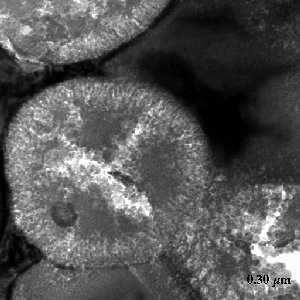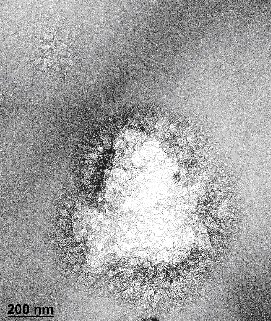 |
TEM-investiagtions for macropore-formation
on n-type-silicon |
| |
 |
This mircograph shows an overview on macropores and dendritic
pores (break-through-pores) on n-type-silicon etch under backside.illumination.
It is obviously that the dendritic pores growth anisotropic - the
growth-direction is the <100>-direction. |
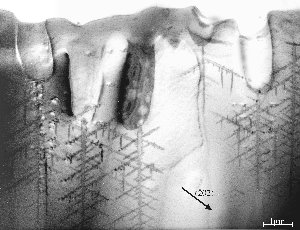 |
| |
|
|
|
| |
|
|
|
| |
 |
The macropore-walls show (111)-facetts.
This facetts can be explained in the modell for macropore-formation as surface
with an slow kinetic for H-termination. |
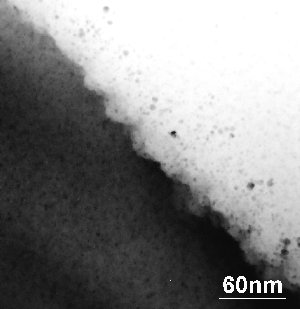 |
| |
|
|
|
| |
|
|
|
| |
 |
At the tips of the dendritic-pores Spannunsgkonstrate were
found. It was shown with EDX-analyse that an silicon-oixde was build at the
pore tips. The oxid-formation is an part of the formation modell. |
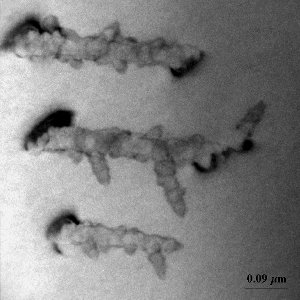 |
| |
|
|
|
| |
|
|
|
| |
 |
The dendritic pores were formed by intercalating
(111)-oktaeder. The (111) is the plane with the lowst kinetic for the
passivation. |
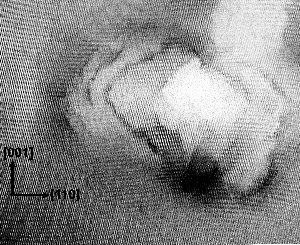 |
| |
|
|
|
| |
|
|
|
| |
 |
A schematic picture of an dendritic pore. The (111)-okteader
were shown. The size of the oktaeder should by a function of the etch-potential
and the H-concentration. |
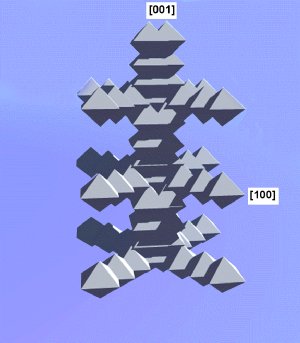 |
| |
|
|
|
| |
|
|
|





